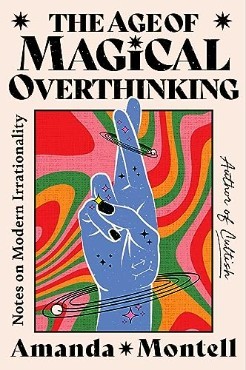The attempts I made to get out of my own head were sundry and full of nonsense.
I visited a petting zoo for adults. I tried learning to meditate from a British computer voice. I stocked up on an unregulated nutrition powder called "Brain Dust." My brain felt like dust. In the last few years, "dread for no reason" became one of my most frequent Google searches, as if the act of typing my feelings to a robot would make them go away. I gorged myself on podcasts about women who'd "snapped," at once repulsed and tantalized by those who wore their madness on their sleeves. How good it must feel to "snap," I thought. My most cinematic attempt at mental rehab involved picking herbs on a farm in Sicily under a light-pollution-free sky. ("At night here, the stars are so close, they could fall into your mouth," the herb farmer told me, sending my heard to my throat.) With varying degrees of "success," I was doing everything I could to think of to defect from the state of overwhelm and consumption that had become my life in the roaring 2020s. Anything to gain some perspective on the mental health exigency I'd been experiencing, and trying to rationalize, for the better part of a decade.
Every generation has its own brand of crisis. Those of the 1960s and '70s were about gaining freedom from physical tyrannies—equal rights and opportunities to vote, learn, work, mobilize. They were crises of the body. But as the century turned, so did our struggles inward. Paradoxically, the more collective progress we made, the more individual malaise we felt. Discourse about our mental unwellness crescendoed. In 2017, Scientific American declared that the nation's mental health had declined since the 1990s and that suicide rates were at a thirty-year high. Four years later, a CDC survey found that 42 percent of young people felt so sad or hopeless in the last two weeks that they couldn't go about their normal days. The National Alliance on Mental Illness reported that between 2020 and 2021, crisis calls to their lifeline were up 251 percent. We're living in what they call the "Information Age," but life only seems to be making less sense. We're isolated, listless, burnt out on screens, cutting loved ones out like tumors in the spirit of "boundaries," failing to understand other people's choices or even our own. The machine is malfunctioning, and we're trying to think our way out of it. In 1961, Marxist philosopher Franz Fanon wrote, "Each generation must, out of relative obscurity, discover its mission, fulfill it or betray it." Our mission, it seems, has to do with the mind.
My fixation with modern irrationality took root while I was writing a book about cults. It was 2020, and looking into the mechanics of cultlike influence during that year's existential imbroglio cast new light on the many faces of twenty-first-century derangement. Since the new millennium, humanity had built a megamall full of fun and fresh ways to dissociate: Fringe conspiracy theories had gone mainstream. Celebrity worship reached a hallucinatory zenith. Disney Adults and MAGA zealots were blackout drunk on nostalgia, drowned in chimeras of the past. These misbeliefs came in a range of flavors, from whimsical to warlike, but one thing was certain—our shared grasp on reality had slipped.
